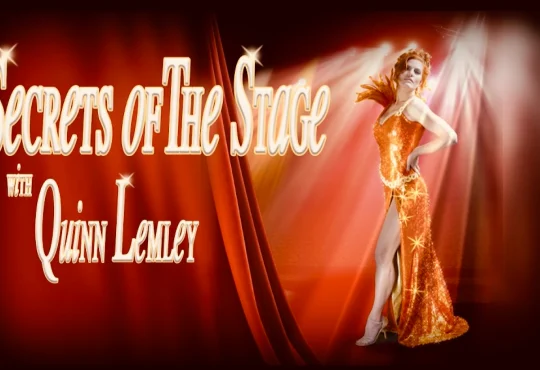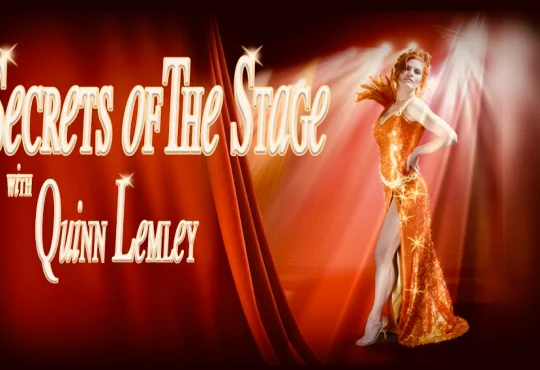All the Country Music Easter Eggs
Houston was the first lecture hall Beyoncé encountered in her studies of all things country. There, her professors were the Texans building community through church, cuisine, and cowboy culture. Even as her rising star whisked her away from her hometown, the musician’s roots continued to run deep, and the studio became her classroom. In 2016, she released “Daddy Lessons,” a self-reflective musical treatise about suiting up as a soldier ready to protect and defend both herself and her family — an artisan of true Texan values. With Cowboy Carter, her first full-length plunge into country music, Beyoncé steps in front of the podium to deliver some lessons of her own.
The artist is both teacher and student across the album, which is informed as much by her own lived experiences as it is by the legacies of the pioneers and overlooked stars that came before her. It emerged in the aftermath of Beyoncé’s appearance at the 2016 CMA Awards, where she performed “Daddy Lessons” with the Chicks. There, she was met with a response that positioned her as an outsider — someone who didn’t belong on that stage because, for some, she was too pop, and for others, she was simply too Black. “Because of that experience, I did a deeper dive into the history of Country music and studied our rich musical archive,” Beyoncé shared in a statement when unveiling the Cowboy Carter album artwork.
Beyoncé’s findings were multidimensional, generation-spanning histories of the genre, as well as the culture that informed its image and heritage. The visual and sonic presentations of the record are meticulous and intentional, and her message is clear to those who are willing to engage earnestly enough to receive it. The nods are in the music but also in the language surrounding the album. It’s in the featured guests, the song titles, and the promotional marketing. It’s in the intentionality of her declaring: “This ain’t a country album. This is a Beyoncé album.”
Before Cowboy Carter received its official title as the second installment of a trilogy that began with 2022’s Renaissance, it was introduced as Act II with “Texas Hold ‘Em” and the ballad “16 Carriages” as its lead singles. The more upbeat, line-dance-ready song was featured in a teaser video, setting the tone for the visual direction of the era. In the 57-second clip, Beyoncé drives through the desert in a yellow taxi cab, riding past a sign for Radio Texas that reads: “100,000 Watts of Healing Power,” the highest effective radiated power for FM stations in the U.S.
As she presses down on the gas in the clip, kicking up dust in her wake, a crowd gathers around a billboard reading “Texas Hold ‘Em” in bold lettering, set against a dramatized image of her lounging in red lingerie with a matching cowboy hat. The scene seemingly referenced the imagery of Wim Wenders’ 1984 film Paris, Texas. The contemporary Western finds two brothers unexpectedly bonding while on a road trip to Houston after years of being separated. When the Cowboy Carter tracklist was revealed, the song “Spaghetti” was interpreted as a potential nod to spaghetti Westerns, the subgenre that frequents European filming locations like Texas Hollywood/Fort Bravo in Spain.
This thematic thread of genre classifications and contrast transportation — whether in the “Texas Hold ‘Em” taxi cab or the highways and byways Beyoncé sings about on “16 Carriages” — is highlighted most extensively in the presentation of the album tracklist. “Cowboy Carter and the Rodeo Chitlin’ Circuit,” reads the headline on the near-indecipherable list. “Brought to you by KNTRY Radio Texas.” Each song title is presented in either red or blue color-blocked cut-outs, some circles, some rectangles, and some in the shape of spiked pop art. Among them appear black and white images of Beyoncé highlighting the details of her pigtails, piano accordion, and giant belt-buckle earrings.
The formatting of the poster calls back to the Chitlin’ Circuit that entrepreneurs Sea and Denver D. Ferguson are credited with establishing in the 1930s. The venues contained within the circuit provided Black entertainers with performance spaces, especially during times when venues were segregated, and promoters would often turn them away. The same comic book-like approach promoted concerts like the Motortown Revue, which ran in the Sixties and hosted Motown artists like Stevie Wonder, Martha and the Vandellas, and Marvin Gaye. The circuit spanned dozens of cities, from Austin, Texas, and Birmingham, Alabama, to Detroit, Michigan, and Harlem, New York, where the Cotton Club and Apollo Theater became cultural staples.
Another bubble on the Cowboy Carter poster reads “The Linda Martell Show,” a salute to an often-overlooked musician who paved the way for Black women in country music. Martell released her first and only album Color Me Country in 1970, marking the first major release by a Black woman in the genre. And the success of the record led to her becoming the first solo Black woman country artist to play the Grand Ole Opry, the Nashville-based longest-running radio show in American history.
In an exclusive interview with Rolling Stone published in 2020, Martell detailed the hardships she faced during her fleeting career, which began its decline when her record label at the time — Plantation Records, of all names — began to prioritize Jeannie C. Riley, a white country pop artist, over her. She never had it easy. “A lot of times, you feel like saying, ‘OK, look here, I don’t wanna hear that. Please quit calling me names like that,’” Martell said about her experience performing for predominantly white audiences, which would often hurl obscenities at her. “But you can’t say that. You can’t say anything. All you can do is do your singing and try your best to forget about it.”
Martell had received some words of advice from Charley Pride, a pioneering country performer who made history-making waves in the genre as a Black musician. He had told her to toughen up — to develop a thick skin and get used to being called out of her name. It applied to both audience members and industry executives. Many expected Beyoncé to follow this same line of thinking in response to the fallout from her 2016 CMA Awards performance, but she owed it to both herself and the Black country community — those who came before her and those who have been doing the work consistently for years, from Mickey Guyton and Tanner Adell to Rhiannon Giddens and Brittney Spencer.
Pride was a frequent performer at the Houston Rodeo, which Beyoncé and her family would attend annually throughout her childhood. He hit the stage there 19 times between 1970 and 2002. Over the years, the annual event has also hosted country-driven performances from the likes of Loretta Lynn, the Commodores, and Willie Nelson, who is mentioned on Cowboy Carter track “Smoke Hour” and appeared at the Rodeo the same year Beyoncé watched Selena and Frankie Beverly & Maze perform there. She’s performed there herself, too, twice with Destiny’s Child and twice on her own.
Given that Beyoncé rode into one of those solo performances on horseback, it shouldn’t have been surprising to see her echoing the culture of Rodeo Queens on the album artwork for Cowboy Carter. In the image, she perches on a white stallion, one that is actively moving forward with its front hooves elevated. In one hand, she holds its reins. In the other, she holds an American flag. Across her chest is a sash that reads: “Cowboy Carter.” Rodeo Queens often don titled sashes and cowboy hats procured from pageant contests, like Miss Rodeo Texas.
Rodeo Queens helped shape the culture of these events alongside cowboys and cowgirls, like the ones Beyoncé paid homage to in 2021 with Ivy Park Rodeo. The clothing collection was inspired by the Black masters of the craft, Beyoncé told Harper’s Bazaar that year. “Many of them were originally called cowhands, who experienced great discrimination and were often forced to work with the worst, most temperamental horses,” she explained. “They took their talents and formed the Soul Circuit. Through time, these Black rodeos showcased incredible performers and helped us reclaim our place in Western history and culture.”
Even “Levii’s Jeans,” which features Post Malone, seems to be a subtle nod to one of country music’s fashion staples. In recent photos, Beyoncé has paired her denim looks with cowboy hats and boots but has also accessorized with massive belt buckles. In 1922, Levi Strauss & Co. added belt loops to their jeans for the first time, and that fashion shift made it to the rodeo, too. Rodeo star Kenneth Cooper was captured wearing a belt with his 501 Levis in 1928, and according to the brand, Levi Strauss & Co. began celebrating rodeo champions with championship belt buckles in the decades that followed.
“It feels good to see how music can unite so many people around the world, while also amplifying the voices of some of the people who have dedicated so much of their lives educating on our musical history,” Beyoncé wrote in her statement about Cowboy Carter. “The criticisms I faced when I first entered this genre forced me to propel past the limitations that were put on me. Act II is a result of challenging myself, and taking my time to bend and blend genres together to create this body of work … I hope that you can hear my heart and soul, and all the love and passion that I poured into every detail and every sound.”
It’s the little things that come together to form such a rich history. Everything came from somewhere —and on Cowboy Carter, class is in session.







